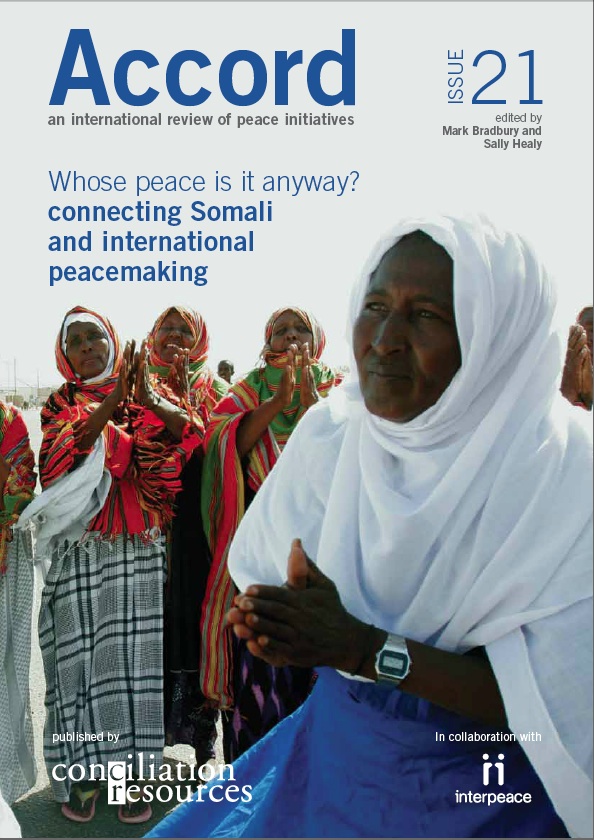Neighbourhood watches (ciidamada madaniga) were the largest coordinated attempt by civil society organisations to provide protection for civilians in Mogadishu through a structured community policing system.
In 2002 the authority of the Transitional National Government (TNG), challenged by the Ethiopian-backed Somali Restoration and Reconciliation Council (SRRC), was critically waning. Warlords were jostling for recognition to secure places for the next peace and reconciliation conference being planned in Kenya. Security in Mogadishu was deteriorating with a spree of kidnappings, killings, rapes and robberies.
In response, civil society organisations came up with a structured plan to roll out a community based security system in Mogadishu, which became known as ‘neigbourhood watches’. The idea had first been proposed by an elder from Bulo Xuubey in Medina District of Mogadishu during a civil society gathering in October 2002. It was developed further in early 2003 as communities mobilised to address the increasing problem of kidnapping. Organisations at the forefront of the action included Civil Society in Action and Women Pioneers for Peace and Life (HINNA), and many other civil society networks in Mogadishu including both Center for Research and Development (CRD) and COGWO.
The plan divided Mogadishu into 80 neighbourhoods, based on the 1990 administrative structure of the city and the security situation of each neighbourhood. These were asked to recruit 20 armed community police officers who were placed under the administration of a four-person security committee selected by the neighbourhood itself.
The resources to administer the neighbourhood watch scheme and pay the security forces were raised from respective neighbourhoods and administered by the security committee. This amounted to 20,000 Somali Shillings (US$1) a month contribution by each household.
Civil society organisations played different roles to monitor the selection process and to train members of the security committee and community police officers on the rules of engagement and a code of conduct. A monitoring mechanism was also devised whereby the media provided live security coverage through the popular radio programme known as Hodi Hodi? (‘May I come in?’). The process proved successful and the scheme was established in all of Mogadishu’s neighbourhoods.
For petty crimes the Mogadishu neighbourhood watches used public shame as the main tool for punishment and deterrence, with criminals locked in a cage publicly for 24 to 48 hours.
In the absence of a conventional judicial system for other crimes such as murder, theft or the destruction of property, both Shari’a and Somali customary laws (xeer) were applied using public courts. The presence of armed community police forces and the threat of being interned in cages in public view deterred criminals. Security improved and crime rates diminished.
In parallel with the neighbourhood watches, local development NGOs supported a voluntary demobilisation programme. Organisations such as COGWO, SAACID, Somali Olympic Committee (GOS), the Formal Private Education Centre (FPENS) and Safe supported a voluntary demobilisation programme. This helped to reintegrate militias, criminals and unemployed youth who had been causing insecurity in the neighbourhoods into the community. It gave them new life skills through education programmes and income generating activities. Many militia and criminals were rehabilitated, but the programme later faced resistance from warlords who saw it as a threat to their military capacities by reducing their pool of recruits.
The success of the initiative led to proposals to extend the scheme to other towns in south central Somalia. However, the formation of the Transitional Federal Government (TFG) in 2004 brought with it an expectation that the new administration would provide security for the citizens. As the TFG reopened police stations the system of caging prisoners was stopped. The government ostensibly took over responsibility for the disarmament of the militias and the general public.
Civil society organisations tried to engage the government in a dialogue to maintain the neighbourhood watches. But, as many of the ministers in the TFG were warlords who were opposed to the scheme, the government refused and disbanded the forces. Nevertheless the structure of the ciidamada madanniga continues to exist in each neighbourhood. The public wants to see them redeployed again, although the government continues to oppose it.

